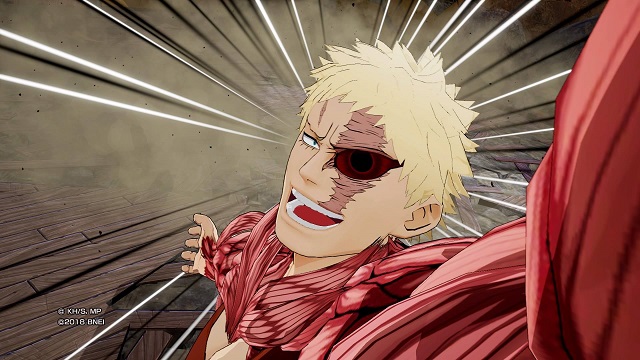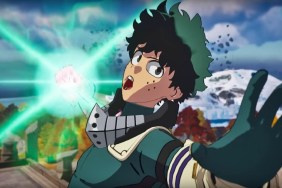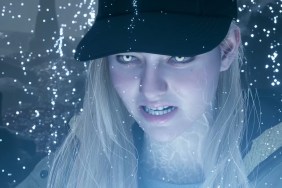If you’ve played any games based on shonen anime in the last few years, you’re familiar with the arena fighter. First popularized by games like Power Stone, the genre has become a favorite way to translate long-running anime to the virtual space. One of the most well-known of recent years is My Hero Academia, a show about heroes going to school to learn about their unique “quirks.” It only makes sense that My Hero Academia would take a turn at the arena fighter with the exhaustingly titled MY HERO ONE’S JUSTICE. Despite the best of intentions and an impressive presentation, One Justice delivers an experience that only fans will appreciate.
My Hero One’s Justice retells the story of the anime starting in the middle of the second season. While there is a brief prologue trying to bring you up to speed, you do need prior knowledge to understand what is happening in the early parts of the game. One Justice does give you some fun alternate scenarios if you do know what’s going on. The main story mode has plenty of “what if” scenarios and side stories as you make your way through the season. After you finish, you even get to play through as the villains, which is always a good way to reskin a game to get extra mileage out of it.
My Hero One’s Justice Review – Origin Story
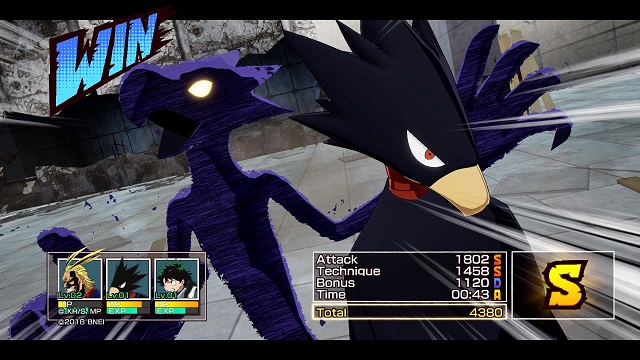
Combat-free scenes play out in a novel visual novel format that matches the series’ inspirations. While it’s bizarre that you’re sometimes presented with multiple “missions” that only comprise of reading, they do help immerse you in the world. The same can’t be said for the game’s spoken undubbed dialogue. I understand that most fans of the show are fine with the Japanese vocal track. However, combat dialogue and chatter in the menus have no subtitles. For someone who’s already trying to grip onto a story in progress, it can be a little too much to handle.
This continues into the game’s other single-player offerings, which are surprisingly robust. In addition to the lengthy story, My Hero One’s Justice offers a mission mode that plays out like an arcade ladder with extras. You pick out a team of characters and take them through a series of fights. They don’t recover health between rounds, but they do get stronger over time and you can collect healing items to keep moving. If you want a more traditional experience, there’s also a standard arcade ladder. It plays all well and good, but it’s worth mentioning that it shows up on the menu at the bottom under Settings. I can’t say I’ve seen that before.
My Hero One’s Justice Review – Danger Room
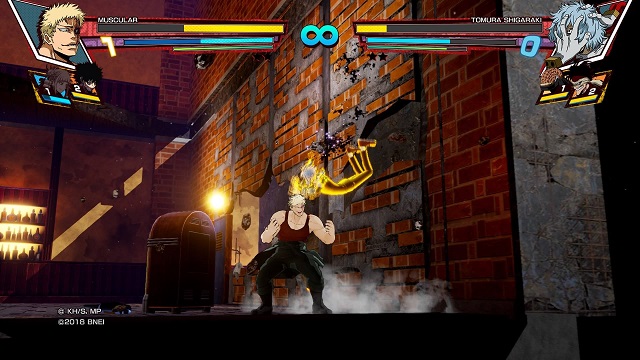
As they come to grips with One Justice‘s many modes, at least newcomers won’t have to worry about gameplay slowing them down. The combat in My Hero One’s Justice is extremely simplistic. You have basic attacks, a pair of superpower moves, and easy to execute supers. Many moves home in on your target, even from across the play area, and the default mode has an auto-combo system that encourages button mashing. However, even on manual, you can usually smash your way to victory in any of One Justice‘s single-player modes.
The camera does get in the way though. You’d think that the focus would be on you, especially in a single-player environment. However, the focus instead seems to shift randomly, leading to you sometimes squinting to see your chosen hero. It doesn’t help that the game also occasionally has you fight on walls and ceilings. If you throw an opponent onto a building, the arena may shift, making that wall the new solid ground. From what I can tell, the characters don’t have spider powers in the show, so I have no idea why this happens. It’s simply disorienting.
In single player, following the action is your only impediment to victory because the AI is dumb as a brick. I’ve seen them run around in circles without attacking for minutes and charge into solid walls as if they’re trying to will themselves through. They rarely block, and I had to screw up royally to get anything below top honors on each mission. So, while there’s a lot of content to get through in the story and mission modes, it ends up as nothing but a grind for customization options. Unless you’re really into the narrative and characters, the online mode might be the only fun you’ll have with One Justice.
My Hero One’s Justice Review – Crossover Event

Before you take the fight to the world, you’ll want to dress your best. My Hero One’s Justice has huge amounts of character customization, and none of it is tied to microtransactions. You unlock plenty of hats, jackets, and plush dolls as you go through the story. For everything else in the shop, you use a currency that racks up after each mission. Speaking with someone more familiar with the anime than me, I can say that it seems like it represents a lot of fan favorite looks alongside the palette swaps. Its expansive cosmetic offerings rival the most recent Tekken games, which is impressive.
One Justice shines in its online mode. The simplistic combat makes more sense when you’re fighting a human player. You’ll actually need to use unblockable attacks and other advanced techniques to break through defenses. Flying high makes more sense against humans, as it more closely captures the kinds of battles you’d see in the show. The combat is still simplistic, but that encourages rallies and close matches with even the most inexperienced opponents. This makes One Justice a great game to pull out at the anime club meeting, even if you won’t have a blast unlocking all those hats by yourself.
My Hero One’s Justice Review – Ink and Paint Club
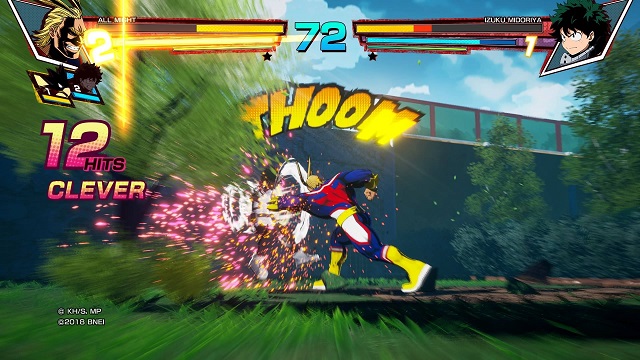
Online or offline, every battle is better because of One Justice‘s bombastic presentation. The graphics pop off the screen and represent each character almost perfectly. The flames and tornadoes that accompany each attack enhance the action, as do the onomatopoeia that burst out on occasion. Seeing a crash in an epic font as you throw your opponent to the ground sells the presentation that the game is going for. Characters are talkative, and I imagine anyone who speaks the language would be happy with the vocal track. Having watched some of the show subtitled, it does sound authentic. Every bout of yelling and stated attack name is over-the-top in just the way you want.
You probably already know if you want to play My Hero One’s Justice. While the fights from the show transfer well to the game’s arena, there’s just not much depth. If you’re looking for an entry point into the My Hero phenomena, steer clear of this game. It does no favors for newcomers since it requires some initial knowledge. Even American fans of the show will be missing something due to the lack of English vocals. However, if you’re just looking to see your favorite characters pull off authentic signature moves, My Hero One’s Justice packs a decent enough punch.
My Hero One’s Justice was reviewed on PlayStation 4 with a copy provided by the publisher.
-
Bombastic presentation.
-
Online play is satisfying.
-
Great representation of the anime.
-
Why is Arcade Mode below Settings?
-
Painfully bad AI.
-
Unwieldy camera.
-
Overly simplistic fighting system.
